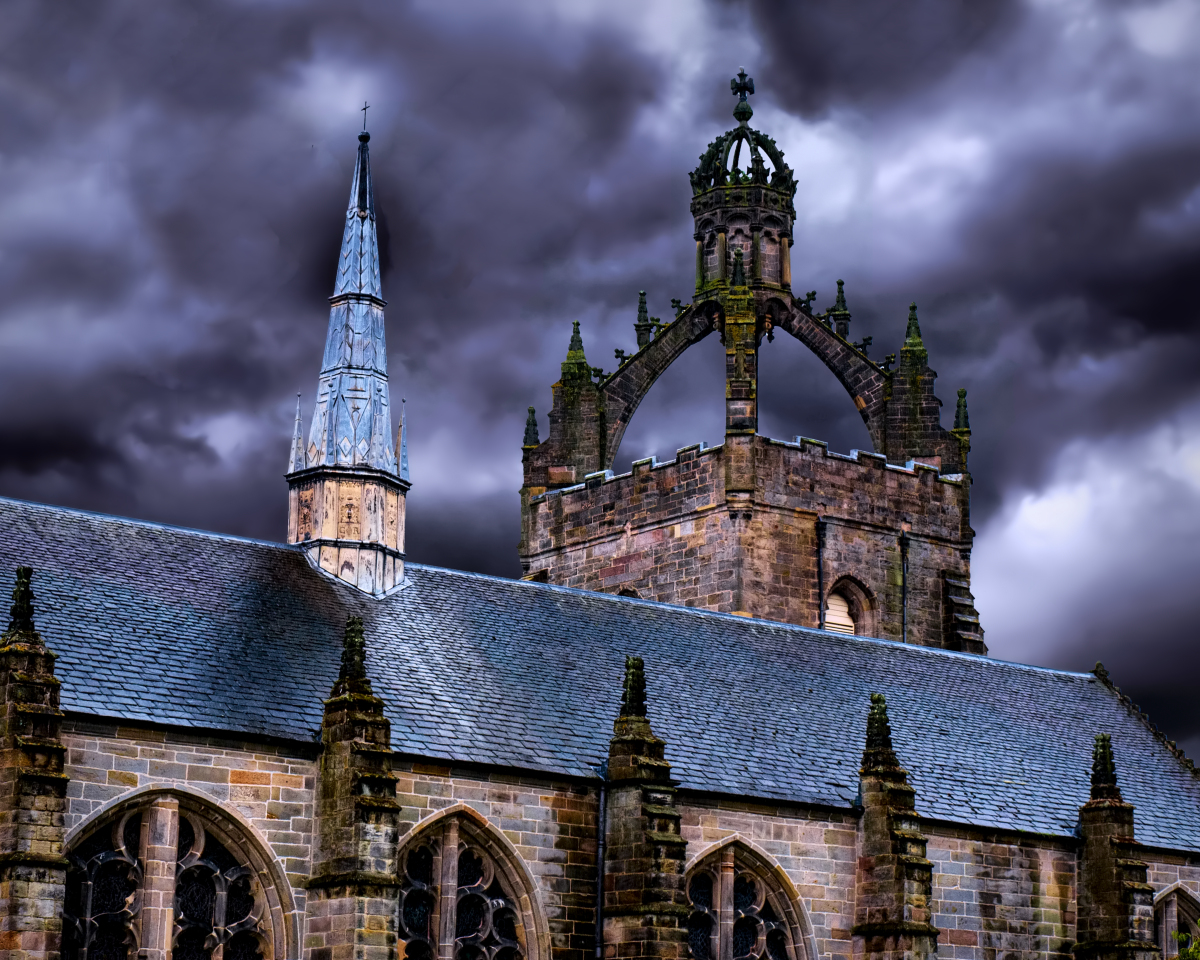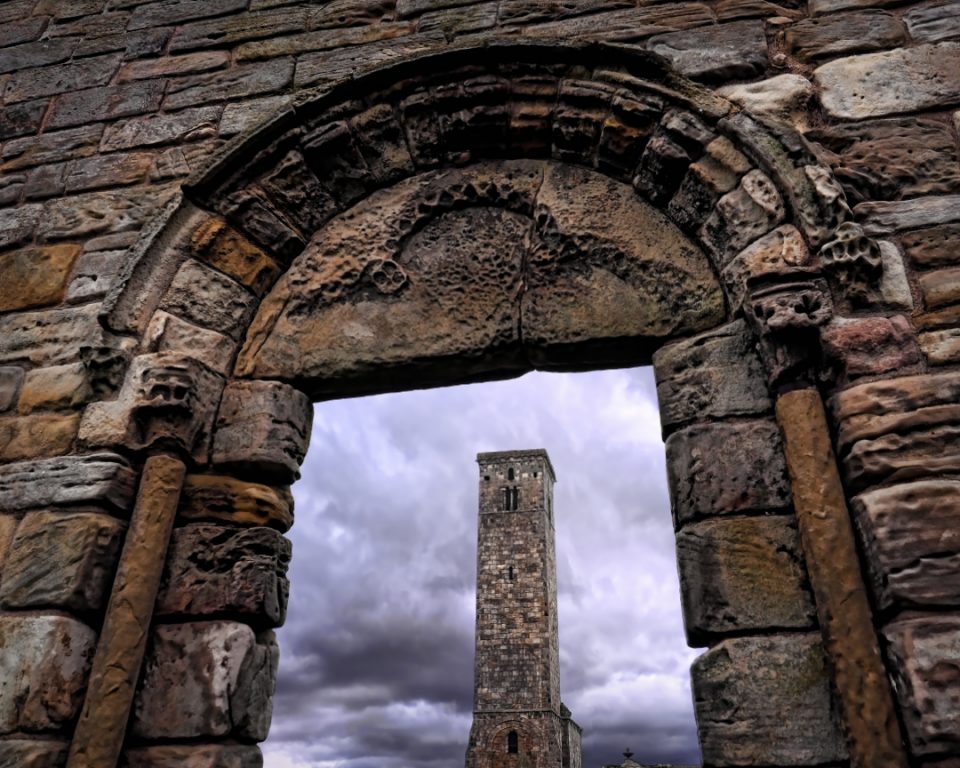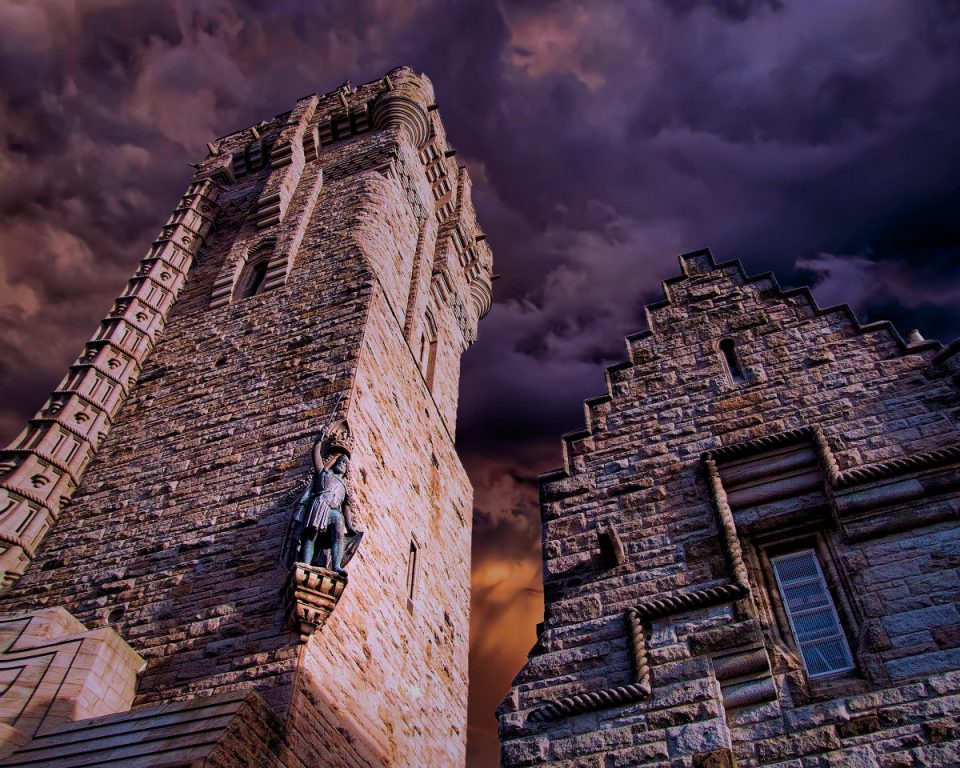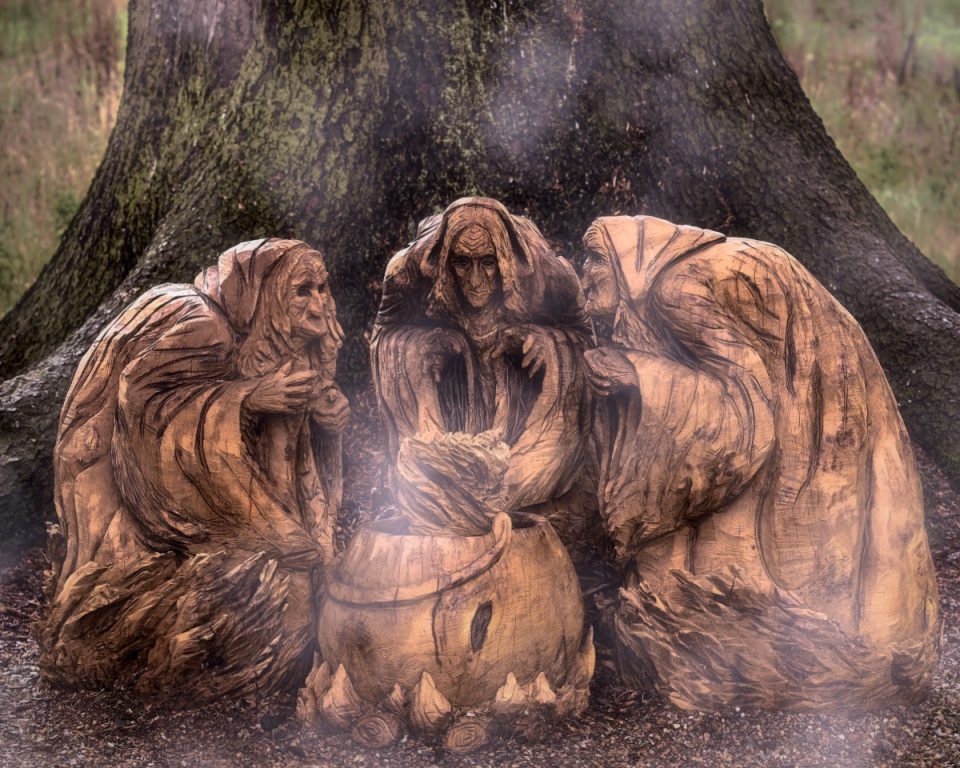Less is known about the life of Sacrist Downie than his death. Some think he may never have existed. Indeed, there is no record of the Sacrist ever having worked at Aberdeen University. Today on the 525th anniversary of the University, we are going to investigate a dark tale of revenge and death!
The 10th of February marks Founders’ Day at Aberdeen University, the fifth oldest English-speaking university in the World. Only Oxford, Cambridge, St. Andrews and Glasgow can claim to be older. A Papal Bull was issued by Pope Alexander VI to support Bishop William Elphinstone’s vision to open King’s College to all. When the original university was formed, there were some 36 staff and students studied arts and divinity.
What was a Sacrist?
In medieval times, colleges were places of learning attached to churches and cathedrals, hence the Papal Bull needed before King’s College could become a university. A beautiful chapel lies at the centre of King’s College. A Sacrist was a minor church official charged with looking after the communion cups, ringing the bells for services, digging graves and generally looking after the building. Today, their equivalent would be a janitor. Sacrists were employed at King’s College from its foundation in the 15th Century. Their duties extended to ensuring the students got their rising and curfew bells. Back then, a student was expected to get up at 5 am and go to Matins, the first church service of the day, before breakfast. During the Summer, Matins took place at 4 am.
One of the first daily duties a sacrist was expected to perform was to unlock the college gates to the non-resident staff. Then in the evening, they would relock the doors. The young scholars had dormitories within the college walls. The students were under strict orders not to leave the building without permission. Woe betide any student locked outside after curfew! Life was tough and extremely regimented for the students: many of the boys were no more than 14 years old when they first entered college. Is it any wonder that they rebelled against a strict regime?
Who was Sacrist Downie?
One of the early sacrists was a fellow named George Downie. He was a stickler for the rules and as such had earned the hatred of the young men under his charge. The college doors would be locked on time in the evening and the pleas of any late-returning students fell on deaf ears. Sacrist Downie would refuse to unlock the doors until morning.
It is believed that George Downie lived sometime during the late 18th Century for in 1776 the college library was moved to the nave of the chapel. He had the reputation for being officious and a sneak. No mischief was permitted under his watch.
Sacrist Downie charged in ‘Court’
The young boys had enough of Sacrist Downie and plotted their revenge. They would teach the old tyrant a lesson for spoiling their fun.
Thus it was, that all the Masters and professors were called to a lavish meal in the New Town. Downie was left on duty.
While he was doing his rounds, some of the older students jumped him and threw a blanket over his head. Next, they dragged their dementor into the library. Imagine Sacrist Downie’s shock when the blanket was removed from his head, revealing that the library had been set out to look like a courtroom. He was surrounded by boys wearing their academic robes and masked to disguise their identities. As the ‘trial began, he was informed that the was being put on trial for ‘crimes’ against the student body. One by one, his accusers stepped forward and levelled their complaints about how the man had annoyed them over the years.
Judgement pronounced on Sacrist Downie
At length, the ‘judge’ passed sentence on the distraught sacrist. The ruling of the court was death! Downie shrieked and protested his innocence. The prank had gone far enough! If they released him, he would not tell the Masters what had happened. But Sacrist Downie was about to get a large spoonful of Karma: his pleadings fell on deaf ears. The ‘executioner’ entered the room, cloaked and hooded, bearing a hatchet, not unlike the axe wielded by ‘John Justice’ the town executioner.
A Prank Gone Wrong
Sacrist Downie was then forced to kneel before an empty basket and informed that the execution would take place on the stroke of midnight. Trembling, the man pleaded with the students. Imagine his horror as the clock began to chime in the Town House at the head of the High Street! His panic rose as the executioner raised the axe and loomed over him. “May God have mercy on your soul!” the axeman stated, then the whoosh as the axe descended.
But instead of a blade, a wet cloth was slapped on the man’s neck by another student. Sacrist Downie lurched downwards. No doubt the library filled with jeers at Downie’s display of cowardice. Then an uncomfortable silence would have descended as realisation set in. The Sacrist was not moving. He had died of fright! The students scattered, while the main perpetrators set about restoring the library to order and hauling the unfortunate man’s body outside the college gates, using his keys.
A Cover-Up
It would have been no easy feat to carry the body up most of the length of the cobbled High Street and the Chanonry. Perhaps they found a cart. His body was buried in a shallow grave, outside the wall of Saint Machar’s Cathedral. A mason’s mark of a star in a circle marked the spot where they laid him to rest.
Sacrist Downie’s Widow
The next morning, Downie’s wife came marching into the college, demanding to see the Principal. Where was her husband? He had not returned home that morning! A search was instigated but to no avail. Several days later, the student body was called together. The young students were brothers-at-arms and refused to break their silence. With no clues to work with the Principal was forced to issue punishment on all the scholars. Their academic robes which were calf-length were cut at the knees. Thus, it was that for many years the robes at Aberdeen University were different from those at other universities.
A Mystery
To this day, the incident of Sacrist Downie is shrouded in mystery. Not only is he missing from University records, but the first time the tale was circulated was in 1825 when Robert Mundie of Monymusk published it in the Castle Spectre magazine. His father had been a sexton at St Machar Cathedral and his grandfather had been a sacrist at the University. Had he heard the strange tale from them? Then there was the question of the strange 9-foot-tall obelisk which was erected during the 2780s on what was known as Downie’s Howe, in the Berryden area of Aberdeen. It was said to have been erected in memory of the dead Sacrist. This was subsequently moved to Seaton Park in 1923. It bears the enigmatic wording, “I cannot tell how the truth may be: I say the tale as it was told to me”.
If you have enjoyed this article, please share the spooky using the icons below or leave a remark in the comment’s box.




